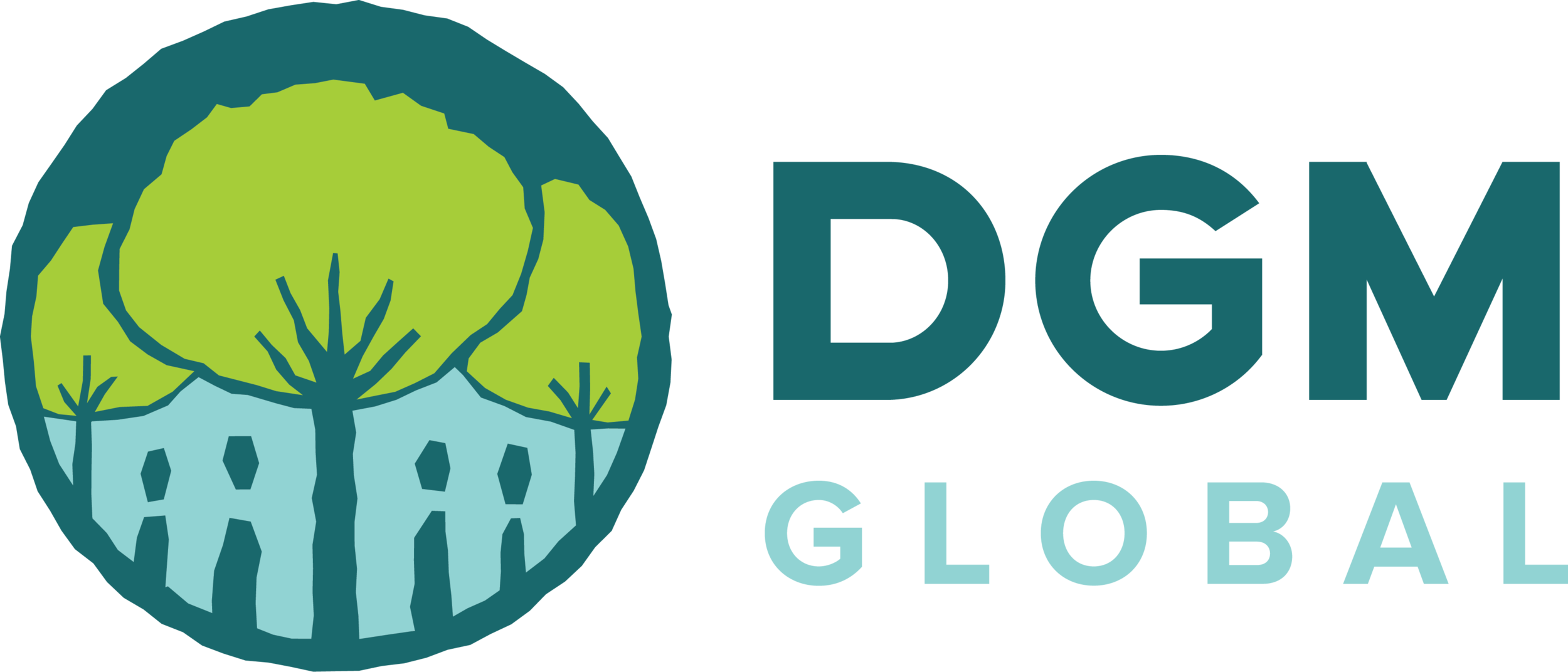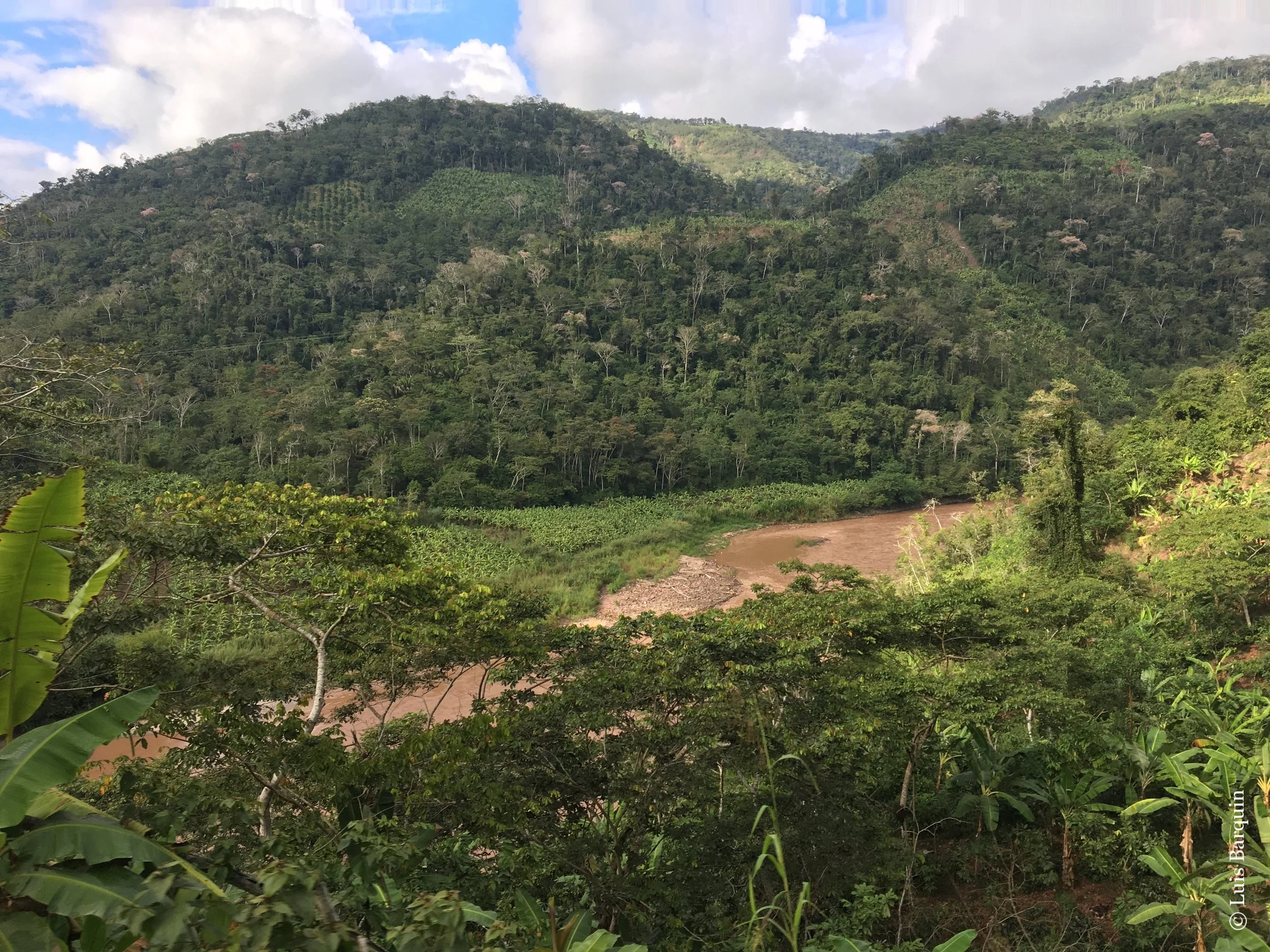Recognizing Indigenous Peoples’ Land Rights is Critical to Natural Climate Solutions
DGM Global cannot guarantee the accuracy of Google translations. In case of discrepancies, the original language takes precedence.
Contributed by: Luis Barquin-Valle, DGM Global Executing Agency at Conservation International
Editor’s note: In honor of International Day of the World’s Indigenous Peoples on August 9, we are sharing a series of three posts highlighting the critical role indigenous peoples and local communities play in ensuring ecosystems are managed sustainably. This post highlights increasing evidence that the recognition of indigenous peoples’ rights is critical to natural climate solutions. Click to read the previous two posts in the series: Johnson Cerda and Milagros Sandoval.
Nationally Determined Contributions (NDCs) are the heart of the Paris Agreement and the main vehicle for countries to define national goals, policies and means of implementation to contribute to global climate efforts. Each country must communicate their planned climate actions in the form of an NDC, which will be updated every five years with increasing ambition. As part of the NDC process, countries will be required to regularly submit and report on their progress towards achieving the desired goals.
Starting this year, countries will embark on a “facilitative dialogue” to review and communicate new and more ambitious NDCs by 2020. In light of these upcoming revisions, the increasing evidence demonstrating the important role that indigenous peoples play in achieving climate goals from natural climate solutions should not be ignored: it should be a call to action.
This post explores four important points to keep in mind when talking about indigenous rights and climate ambition:
1. Why do indigenous land rights matter for climate change?
Indigenous Peoples manage – or have tenure rights over – at least a quarter of the world’s land surface;[i] however, only about 10 percent is legally owned[ii]. In many countries, the process to formalize land rights for indigenous peoples has been an historic issue characterized by its complexity, high costs and outdated inefficiency. As the global demand for natural resources keeps growing, so it does the pressure for land control, which, combined with the uncertainty of tenure rights, threatens accountability for indigenous rights and environmental governance in developing countries.
Road to DGM Saweto land titling project of Ashaninka Native community in the district of Rio Tambo, region of Junin, Peru. Photo by Luis Barquin
2. Connecting the Dots: Rights, Forests and Climate Change
Tropical forests hold the potential to provide one-third of the near-term solution to mitigate climate change[iii]. Growing evidence demonstrates that when the rights of Indigenous Peoples to their land and natural resources are respected, deforestation rates are lower than in areas managed by the government[iv].
Incorporation and implementation of natural climate solutions as part of every country’s NDC is critical to help reach the global mitigation needed between now and 2030 to stabilize warming to below 2 °C[v].
3. The Paris Agreement and National Action
When the Paris Agreement was adopted in 2015, only 21 NDCs included clear commitments to implement community-based land tenure or natural resource management strategies as part of their climate change mitigation plans[vi]. Reviewing natural climate solutions in current NDCs provides governments with the opportunity to address the transparency and complexity of current grant land rights processes. And by appropriately engaging indigenous peoples and local communities (IPLCs) in this revision process will also provide an opportunity to strengthen their potential contribution to climate goals and access to climate finance.
Celebration of historic adoption of Paris Agreement on climate change in 2015. Left to Right: Secretary-General Ban Ki-moon (second left); Christiana Figueres (left), Executive Secretary of the UN Framework Convention on Climate Change (UNFCCC); Laurent Fabius (second right), Minister for Foreign Affairs of France and President of the UN Climate Change Conference in Paris (COP21) and François Hollande (right), President of France celebrate after the historic adoption of Paris Agreement on climate change. Photo by: UN Photo/Mark Garten/Flickr Creative Commons
4. The Lessons Learned
Initiatives led by indigenous peoples and local communities such as the Dedicated Grant Mechanism (DGM) are demonstrating – with exciting results – that the impact of indigenous peoples’ implementation of climate finance can be felt across many scales, from the improvement of livelihoods at the local level, to streamlining land titling efficiently at the national level. While Peru’s NDC does not specifically include land titling efforts, it indicates “it is necessary to consider among the enabling conditions all actions leading to territorial and land use regulation and guaranteeing indigenous peoples’ territorial security.”
Successes like the DGM Saweto initiative in Peru demonstrate ways that IPLCs can be successfully involved in national actions. Key factors for their success include:
- It is decentralized: the fact the DGM Saweto is not a government program has already demonstrated its efficiency in comparison to bigger and older funding pledges for land titling in Peru.
- It is governed by indigenous peoples: DGM Saweto is governed by indigenous peoples organizations and managed by an executing agency. This structure contributes to transparency and effectiveness when targeting project objectives and priorities.
- It is implemented by indigenous organizations: funding is implemented by indigenous organizations, which creates a great sense of ownership and accountability. Project implementers are therefore also already familiar with the context and complexity of land titling processes in each region.
- It is designed for specific purposes: the funding has clear objectives and stakeholders are not only delivering results but also building their capacities to manage multilateral finance.
Indigenous leaders from Peru (Fabian Antunez) and Indonesia (Mina Setra) share lessons learned from DGM activities strengthening land tenure security and improving local livelihoods during the 2nd DGM Americas Exchange. Photo by Luis Barquin
What’s next?
Under the UN climate negotiations, countries have recognized the need to strengthen knowledge, technologies, practices and efforts of local communities and indigenous peoples related to addressing and responding to climate change. In this context, the negotiations related to the Local Communities and Indigenous Peoples Platform (LCIP-Platform) provides an opportunity to exchange experiences and best practices on mitigation and adaptation in a holistic and integrated manner.
The LCIP Platform has the potential to build stronger and more ambitious climate action with the active engagement of indigenous peoples and local communities as contributors and governing partners.[vii] For the upcoming UNFCCC COP 24 in Poland, DGM will engage with IPLC partners and climate negotiators on this important topic. Stay tuned!
IPLC leaders and climate negotiators group photo following discussion on the LCIP Platform during the Climate negotiations held in Bonn, Germany (UNFCCC SB48). Photo by IISD/Kiara Worth
Footnotes:
[i] Garnett, S. T., Burgess, N. D., Fa, J. E., Fernández-Llamazares, Á., Molnár, Z., Robinson, C. J., ... & Collier, N. F. (2018). A spatial overview of the global importance of Indigenous lands for conservation. Nature Sustainability, 1(7), 369.
[ii] Rights and Resources Initiative. 2015. Who Owns the World’s Land? A global baseline of formally recognized indigenous and community land rights. Washington, DC: RRI.
[iii] Goodman, R., & Herold, M. (2014). Why maintaining tropical forests is essential and urgent for a stable climate.
[iv] Walker, W., Baccini, A., Schwartzman, S., Ríos, S., Oliveira-Miranda, M. A., Augusto, C., ... & Meyer, C. (2014). Forest carbon in Amazonia: the unrecognized contribution of indigenous territories and protected natural areas. Carbon Management, 5(5-6), 479-485.
[v] Griscom, B. W., Adams, J., Ellis, P. W., Houghton, R. A., Lomax, G., Miteva, D. A., ... & Woodbury, P. (2017). Natural climate solutions. Proceedings of the National Academy of Sciences, 114(44), 11645-11650.
[vi] White, A., Schmidt, R., Coyle, I., Colley, J. D., & Bigda, L. Indigenous Peoples and Local Community Tenure in the INDCs.
[vii] UNFCCC (2018) Introduction to the Local Communities and Indigenous Peoples Platform (LCIPP)




